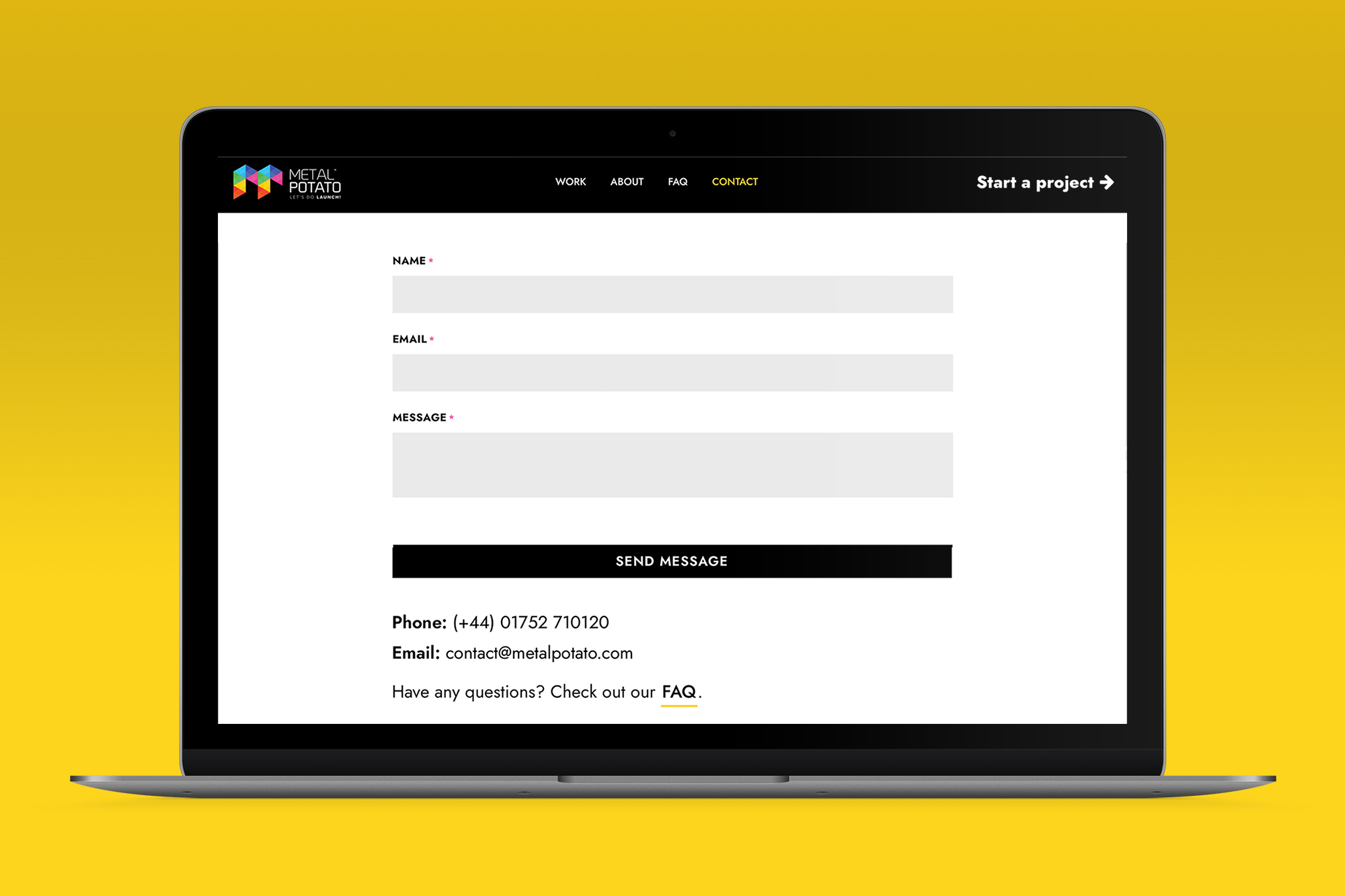Having a well-structured and intuitive website navigation system is crucial for distinguishing your brand and providing a seamless browsing experience for visitors. It acts as a road map, guiding users to relevant pages and information within your site. A user-friendly navigation not only encourages visitors to stay longer and explore your content but also increases the chances of conversions and fosters brand loyalty.
In this article, we will delve into the significance of website navigation and explore best practices to ensure a positive browsing experience for your customers.
The fundamentals of website navigation
Website navigation serves as a vital tool to answer the three fundamental questions that users often ask during their visit: ‘Where am I?‘, ‘Where have I been?‘, and ‘Where can I go next?‘. By addressing these questions through a well-organised navigation structure, you increase the likelihood of visitors staying on your site, engaging with your content, and ultimately making valuable purchases.
What should be included in your navigation?
Determining what to include in your website navigation can be challenging, considering the multitude of pages and information available. However, research suggests that limiting your navigation items to around seven is optimal for search engine optimisation (SEO) and usability.
To make informed decisions about your navigation items, consider the following methods:
- Conversion assists report: Utilise your marketing software’s features, such as a ‘Conversion Assists Report,’ to identify the most popular pages viewed by visitors who converted into sales. This report can provide insights into which pages, such as product/service pages, case studies, and pricing, should be prioritised in your navigation.
- Google Analytics visitors flow: If you don’t have access to conversion assist reports, you can leverage the ‘Visitor’s Flow Report’ in Google Analytics. This report visually demonstrates how users navigate through your site, starting from the original source and tracing their path to each page they visit before exiting. This information can help you make informed decisions about your website’s navigation structure.
Now that we understand the importance of website navigation and how to decide on navigation items, let’s explore some best practices to ensure a positive browsing experience for your customers.
Website navigation best practices
1. Ensure navigation is easily found
Website users have little patience for complicated and unclear navigation. Position your navigation bar where users expect it, such as horizontally along the top or vertically on the left or right side of your homepage. This placement ensures easy access to navigation, allowing users to find the information they seek without frustration.
2. Emphasise consistency
Consistency is key when it comes to website navigation. Ensure that your navigation is placed in the same location on every page of your site. Consistent use of colours, design, and fonts creates a sense of familiarity and ease for visitors. Avoid changing the position or style of navigation on different pages, as this can confuse users and lead them to search for alternatives with more transparent layouts.
3. Get the order correct
Take advantage of the psychological “Serial Position Effect” when structuring your navigation. People tend to remember and pay more attention to the first and last items in a list. Apply this principle to your navigation by placing the most important items at the beginning and end of the list, with less critical pages in between. For instance, consider placing your ‘Contact’ tab at the end to ensure it receives the attention it deserves.
4. Be specific and clear
Avoid using generic terms in your navigation structure, as they may not clearly convey the content enclosed within. Instead, opt for specific and descriptive names that directly lead visitors to the desired pages. For example, use labels like ‘Blogs,’ ‘News,’ or ‘Case Studies’ instead of vague terms like ‘Resources’ or ‘Tools.’
Strong website navigation also plays a vital role in search engine optimisation (SEO), as it helps search engines understand the structure and relevance of your content. Therefore, using specific and targeted keywords in your navigation can improve your chances of ranking higher in search engine results.
5. Minimise navigation links
Too many choices can overwhelm visitors and leave them uncertain about where to click. Research suggests that limiting your navigation items to around seven is optimal for users’ short-term memory.
By simplifying your navigation, you reduce the cognitive load on visitors and make it easier for them to find the information they need.
6. Recommend next steps
After visitors complete an action on your site, they may not always know what to do next. Instead of allowing them to exit, suggest relevant follow-up options to enhance their user experience. For example, if a user reads a blog post, recommend similar topic guides or videos they might enjoy. This approach is particularly useful for new visitors who may be unsure of what they are looking for. Implementing features like ‘Next Post’ or ‘Next Product’ can also guide users through your content until they find what they are searching for.
By following these best practices, you can create a well-structured website navigation system that enhances user experience, increases engagement, and boosts conversion rates. Now, let’s dive deeper into the benefits of effective website navigation.
The benefits of effective navigation
Implementing a user-friendly navigation system offers numerous advantages for both your audience and your business. Let’s explore some of the key benefits:
1. Enhanced user experience
A well-designed and intuitive navigation structure makes it easy for visitors to find the information they are looking for. By reducing the time and effort required to navigate your site, you provide a positive user experience that encourages users to explore more and stay engaged. This, in turn, increases the likelihood of conversions and fosters customer satisfaction and loyalty.
2. Improved SEO rankings
Search engines value websites that provide a seamless user experience, including easy navigation. When your website is organised and structured with clear navigation, search engine crawlers can efficiently index your content, understand its relevance, and rank it higher in search engine results. Including relevant keywords in your navigation can further optimise your site for search engines.
3. Increased conversion rates
A user-friendly navigation system can significantly impact conversion rates. When visitors can effortlessly navigate through your site and find the information they need, they are more likely to take the desired actions, such as making a purchase or filling out a contact form. By streamlining the user journey and removing any barriers to conversion, effective navigation can lead to increased sales and revenue.
4. Boosted brand trust and loyalty
A well-structured website with intuitive navigation instills confidence in your brand. When visitors can easily find what they’re looking for, they perceive your website as organised, professional, and trustworthy. This positive impression builds brand loyalty and encourages repeat visits and referrals.
5. Improved mobile experience
With the growing use of mobile devices for browsing, optimising your website navigation for mobile is crucial. Mobile-friendly navigation ensures that users can easily explore your site on smaller screens, reducing frustration and increasing engagement. Responsive design and intuitive mobile menus are essential for delivering a seamless browsing experience across all devices.
6. Competitive advantage
Effective website navigation sets you apart from your competitors. By providing a user-friendly and intuitive experience, you differentiate your brand and make a lasting impression on visitors. In a crowded digital landscape, a well-designed navigation system can be a key factor in attracting and retaining customers.
Conclusion
Navigation plays a vital role in enhancing the user experience, boosting SEO rankings, increasing conversion rates, and fostering brand loyalty. By implementing best practices such as clear navigation, consistency, and strategic ordering of menu items, you can create a seamless browsing experience that keeps visitors engaged and encourages them to take desired actions.
If you’re looking to improve your website navigation or create a new website that incorporates these best practices, Metal Potato can help. Get in touch and how we can help to turn your vision into reality.
Let's make a website!
Book a FREE video call to discuss your business, project strategy, and more!
"*" indicates required fields
More from Metal Potato
Contact Page Design: A Blueprint for Success
Learn how to optimise your contact page for better engagement and conversions with expert tips and inspiring examples.
Can Apple Vision Pro Revolutionise Computing?
Discover the Apple Vision Pro: a mixed-reality headset set to redefine computing, work, entertainment, and education.
How to Choose the Perfect Typography for Your Website
Master the art of web typography... from font selection to readability, create a visually stunning and user-friendly website.
The Power of WordPress for Small Businesses
Build a strong online presence for your small business with WordPress! It's easy to use, SEO-friendly, and very cost-effective.
Celebrating 40 Years of the Apple Mac
Explore 40 years of Mac evolution! Celebrating Apple's iconic computer and its impact on design, technology, and creativity.
Why LinkedIn Should Be Your Top Priority
Maximise career growth with LinkedIn's powerful benefits! Unlock networking opportunities, connect and build your personal brand.






